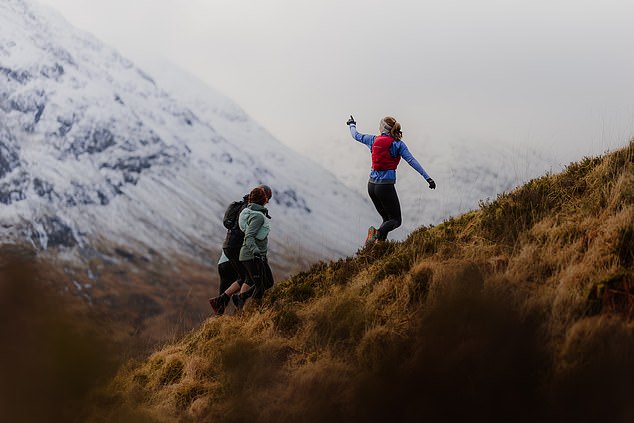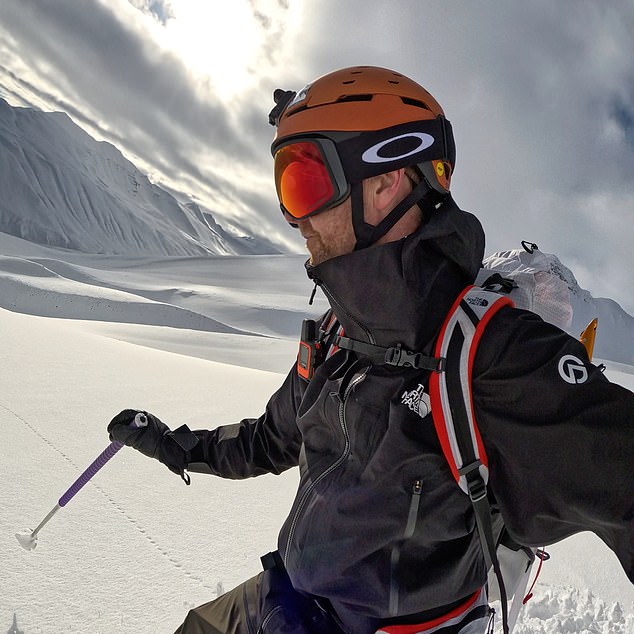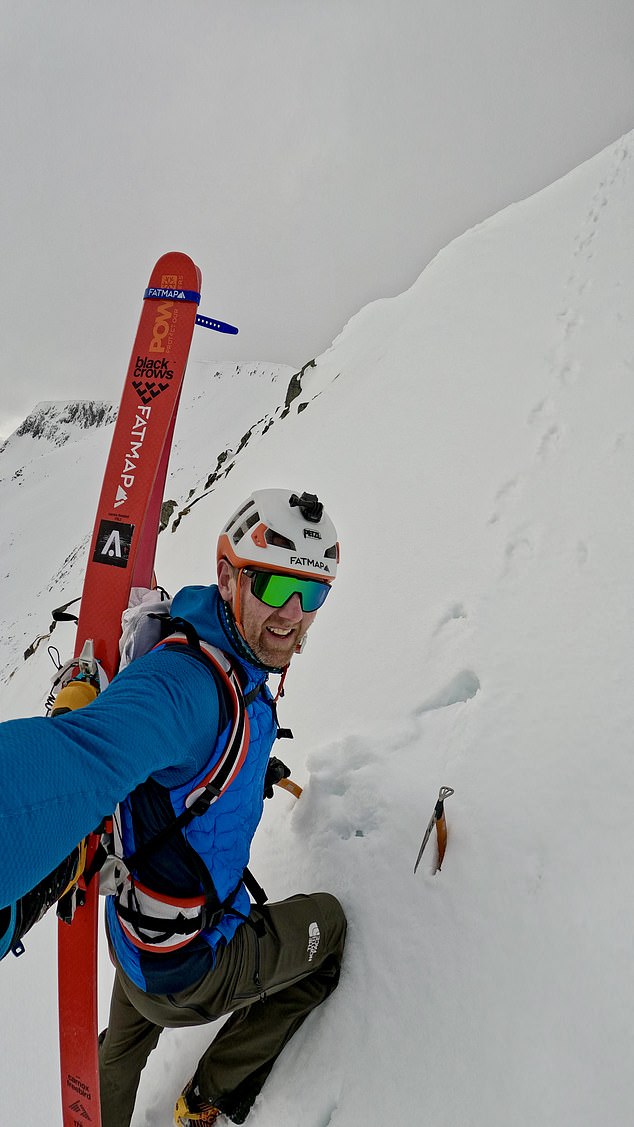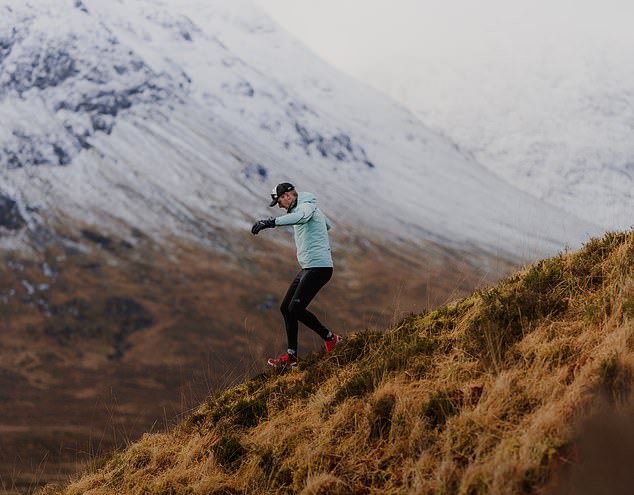The Highlands are there to be explored, so get out and make your own trail
As the Scottish summer reaches its peak, there will be a collective dusting of walking boots across the country.
For many, the boots have been well used so far this year, with access to most of Scotland’s mountains, weather permitting, and safe all year round.
But what about those who are looking for a challenge? Those thrill seekers who want to do something more than just walk and explore the Scottish countryside? That’s where Run the Highlands comes into the picture.
A relatively new expedition based in Fort William, made up of mountain leaders, runners and adventure coaches, this mixed team aims to provide just that and more.
With 282 Munros – mountains over 900 meters high – in Scotland we have an abundance of peaks to climb and we are spoiled for choice with our wild landscape. As of October last year, 7,581 people had reached the summit on each of them.
But there’s more to adventurer Jon Fearne, part of the Run the Highlands team, than just exploring the Scottish countryside.
The Run the Highlands team takes a break during one of their test runs

During their journey, the participants are confronted with all kinds of challenges
The 47-year-old grew up on the south coast of England before moving to the Chamonix Valley, overlooked by Mont Blanc, later in life and now wants to encourage more people from south of the border to explore more, rather than sticking to the ‘marked trails of the Lake District’.
“Run the Highlands is really new,” he says. ‘There are just four of us and we know each other from different circles. We thought, “Why don’t we do something that will allow more people to come from south of the (Hadrian’s) Wall to the Highlands and enjoy the trails and mountains from a running perspective?”
‘One thing we have learned is that people south of the wall have very little understanding of the fact that they can flee into the Scottish Highlands.
‘For example, if you go to the Lake District, everything is signposted and there is a walking path. But when you come to the Highlands there is very little signage, so you have to make your own route.
“People say navigation is a barrier, but we wanted to create courses to break down those barriers and understand that you can still run and you can still explore, and you just have to think about it a little more.
“This is our first year of Run the Highlands. There are four of us – Anna Danby is a summer and winter mountain guide, Sally Hudson a summer and winter mountain guide, George Fisher has just completed his mountain leadership course and won the Sky Runner series in Britain last year. So we think that the four of us can create a very good package that is accessible to everyone.’ With a background in outdoor education, surfing, kayaking and sports science, and training people to take on endurance adventures themselves, Fearne has a unique insight into what it takes to tackle the Scottish Highlands.
Since being diagnosed with hyperactivity disorder at the age of nine, now known as Attention Deficit Hyperactivity Disorder, Fearne has emphasized that the idea of adventure is something no one should be afraid to tackle, despite the obvious challenges it presents .

Jon Fearne has done a number of different challenges around the world

Whether it’s the rugged mountains of Scotland or the snow-capped peaks of Switzerland, Fearne loves a challenge
“I was diagnosed with hyperactivity as a child, but it’s now ADHD, so my school got me into sports super early and it’s been a coping mechanism for me since I was about nine,” he says. “So it’s been a way to burn energy. Then I just became more interested in the challenge aspect of being pushed further, being pushed harder.
“It was initially a coping mechanism forced on me by a few teachers, which I am forever grateful for because I know a lot of people don’t get that opportunity, and it has led to a passion for being outdoors and playing in the mountains.
‘I’ve been doing this for about 28 years now. The endurance line, predominantly, and that kind of drifted back to the adventure side of things and that’s where it just stayed, a mix of ultra and endurance adventure athletes.
‘I have competed in several Ironman races, which I rode semi-professionally. I think I am still the only athlete to have completed both the TransAlp and the TransAlpine, one running through the Alps and the other mountain biking across them.
“For me now, I don’t compete so much, I just pick an adventure and do it.” Now living on the west coast of Scotland, Fearne has settled in and starting to put down roots. But this has not always been the case. Choosing an adventure is something he has always done without hesitation.
After competing in Ironman events, he took his fitness to the next level when he competed in the Trans Alp and TransAlpine events. But even that wasn’t enough.
“A while ago I picked the Troll Peninsula in Iceland in winter, on skis, so I went there with a friend, explored, pitched a tent and skied several mountains,” he adds.
‘I lived in Chamonix for three years where my absolute joy was skiing 4,000 meter peaks, which was my favorite activity while I trained people for other things.
‘The Alpine races last seven days and go through Germany, Italy and Switzerland, I think. Like an ultramarathon, but with more than 2,000 meters of elevation gain.’ Having a background in these types of challenges is one thing, but Fearne admits that Run the Highlands can push the boundaries even further.
Right now the focus is on educating and encouraging people to explore the outdoors, test their limits and do it all safely. But in the longer term, there may be an opportunity to add more survival aspects to their adventures.
‘We do a mix of events. You have the whole weekend, we do a five-day course, but we also do some tailor-made courses,” he says. We even have some locals contact us and ask if they can just come and do it one day.
‘There are no survival aspects to it – that would be another level we could go to, as many Scandinavians have done. We learn the basics of navigation in the Scottish mountains as we have guides with us. It is mainly focused on how to get around in the mountains and how to actually run in the mountains; what kind of gear to bring so people understand that it’s not just running, that most of the uphill parts are walking and route finding.
“We teach people how to use poles to help you, how to attack the ascent, because a lot of people are okay with standing on something, but getting back down is the problem. That’s why we try to involve everyone on the trails.

The Highlands will offer challenges that people will not face anywhere else
‘We try to cover everything, including shoes and aftercare. We want to make sure that people take care of themselves and also get out on the trails.
‘It’s about giving people more confidence to go into the mountains at a little more speed, to understand their limits, to know how to approach them and also how to retreat above them and be sensible.
“Once you show it to a few people, they’re going to show it to their friends and then they might come up and do it themselves.” Despite the familiarity of the weather conditions and tests he has previously tackled, Fearne insists that Run the Highlands will in fact be more difficult than some of the challenges he has previously completed.
It’s very different from the Alps,” he admits. ‘The Alpine trails are very easy compared to the Highland trails. Okay, you have to deal with altitude, there are some parts where you can be at 2000 meters above sea level on some very nice routes, but they are not particularly technical. If you try to get closer to the peaks, it becomes more alpine than running.
